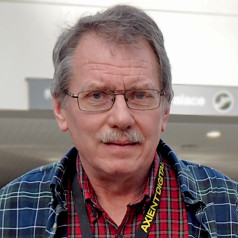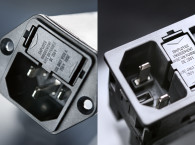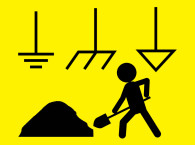
- on Theory Articles
- Article
Video Isolation
Many audio/video installers have encountered hum when interfacing video and audio systems. The hum usually appears when the cable TV coax is connected to the video system. Remove the CATV line and the hum disappears.

I first ran into this problem around 20 years ago, before CATV isolators were readily available. My solution was to connect the 300? ends of a pair of 75? to 300? balun transformers back-to-back.
Garden-variety balun transformers typically have an insertion loss of around 3dB, so the total loss of this solution was around 6dB. But, it did cure the hum problem.
Anyone opting for this cob job approach should beware of certain devices being passed off as balun transformers. I have seen cheap ones that were actually nothing more than feed-through adapters no transformer, no impedance matching, and no ground isolation. Some devices labeled matching transformers use an autotransformer. They are not baluns, and do not provide ground isolation. When in doubt, use an ohmmeter to check for continuity between the 300? and 75? sides, both signal and groundresistance should be infinite.
A more elegant solution to CATV ground isolation is Xantechs model 63400 Ground Breaker. This 75? to 75? isolation transformer costs less than $10. Parts Express sells a similar device, the Dayton VIT-1, part no. 180-075, for also less than $10.

The Jensen VRD-1FF CATV isolator is unusual in that it is the only Jensen product that does not use a transformer (Photo 3). The VRD-1FF is a capacitive isolator. According to my measurements, the device consists simply of two series capacitors, one in the signal path and one in the ground path. Both capacitors measure 2nF. At the power line frequency of 60Hz the device has extremely high isolation impedance, 1.3M?, but the impedance is very low in the RF region.
Jensen claims a bandwidth of 1MHz to 1.3GHz ±3dB. The VSWR (Voltage Standing Wave Ratio) is specified as 1.08:1 from 50MHz to 866MHz. One advantage of the capacitive isolator is extremely low insertion loss in the operating range. Jensen specifies the 50MHz insertion loss at 0.01dB typical and 0.1dB maximum. The device is compatible with analog, digital, and HD systems, as well as modems. According to the VRD-1FF datasheet, the capacitors in the VRD-1FF are rated at 200V DC. However, Jensen notes that the VRD-1FF should not be used in situations where the DC or peak AC voltage between input and output exceeds 34V. Check the voltage potential between your CATV line and the RF input to your video system. If it exceeds 34V DC or peak AC, you have a grounding problem that must be corrected before using this or any other isolation device!
Retailing at $69,99, the VRD-1FF is not cheap, but it boasts the high-quality construction and performance I have come to expect of Jensen products. Because the VRD-1FF has female F-connectors on each end, Jensen also supplies the short jumper cable shown in Photo 3. No corners have been cut here either the jumper uses Canare LV61S cable and Canare FPC4 F-connectors.
The LV61S is a flexible, high-quality RG-59 replacement, and the Canare F-connectors are the finest made. These connectors incorporate a gold-plated, crimped center pin, rather than relying on the cables flimsy center conductor.
Subjectively, the VRD-1FF yields the clearest, sharpest picture of all of the isolation devices I have tried. The capacitive isolation approach is superior to the cheaper transformer alternative, and is well worth the extra expense. I recommend using the VRD-1FF along with one or more CI-2RR isolators to provide complete effective ground isolation between video and audio systems. Note that you cant use the VRD-1FF between a DSS dish and receiver, because the capacitors cant pass the DC power that the receiver supplies to the dish.
Article originally published in audioXpress January 2007

About Gary Galo
Gary Galo retired in 2014 after 38 years as Audio Engineer at The Crane School of Music, SUNY at Potsdam, NY. Since then he has worked as a volunteer in the Crane Recording Archive, transferring vintage Crane recordings to digital. He is the author of over 300... Read more





